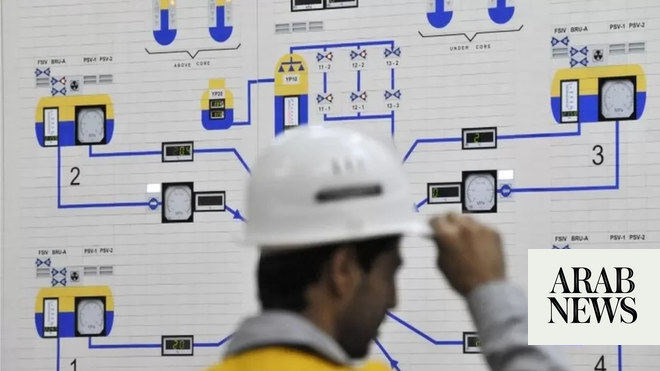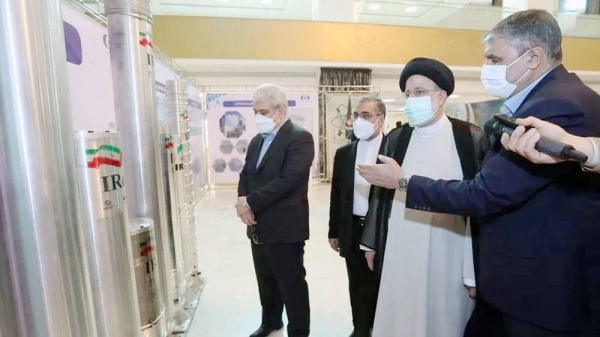
DUBAI: Iran said on Wednesday it gave new details to the UN about two sites near Tehran that inspectors say bore traces of manmade uranium, part of a wider probe as tensions remain high over the Islamic Republic’s advancing program.
The comments by Mohammad Eslami, the head of Iran’s civilian nuclear program, come as Iran’s 2015 nuclear deal with world powers remains in tatters and as Tehran enriches uranium closer than ever to weapons-grade levels.
Resolving questions from the International Atomic Energy Agency could see Iran avoid further censure as an October deadline approaches that would lift international restrictions on its ballistic missile program as well. Speaking after a Cabinet meeting, Eslami said Iran had sent “detailed answers” to the International Atomic Energy Agency.
“If those answers are not accepted and there are any ambiguities or doubts, as we have always said, we will clarify and revise the documents,” Eslami said in comments carried by state television. “We are now in that phase and we have given the IAEA more evidence and documents and will give more so that it can move past this issue.”
Eslami’s comments mark a change in tone as Iran has limited inspections, held surveillance footage and taken years to respond to the IAEA after then-President Donald Trump unilaterally withdrew the US from the nuclear deal in 2018.
Eslami did not name the sites, though the IAEA has identified them as Turquzabad and Varamin just outside of Tehran.
At Varamin, the IAEA in a March report said that inspectors believe Iran used the site from 1999 until 2003 as a pilot project to process uranium ore and convert it into a gas form, which then can be enriched through spinning in a centrifuge.
The IAEA said buildings at the site had been demolished in 2004. Tehran insists its program is peaceful, though the West and the IAEA say Iran had an organized military nuclear program until 2003.
Turquzabad is where the IAEA believes Iran took some of the material at Varamin amid the demolition, though it said that alone cannot “explain the presence of the multiple types of isotopically altered particles” found there.
In 2018, the site became known publicly after Israeli Prime Minister Benjamin Netanyahu revealed it at the UN and called it a clandestine nuclear warehouse hidden at a rug-cleaning plant. Iran denied that, though IAEA inspectors later found the manmade uranium particles there.












